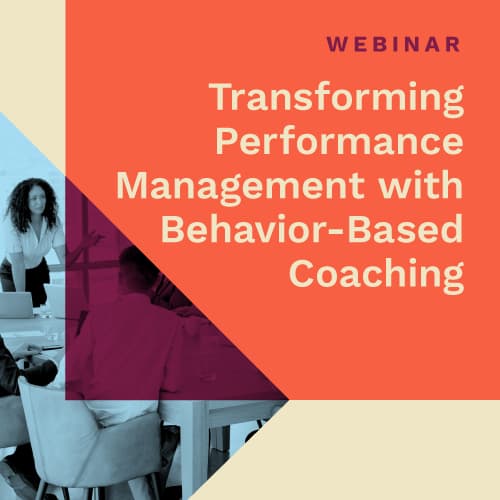Deloitte recently published their 2019 Global Human Capital Trends insights, providing an updated roadmap for future organizational success. Among the core research topics discussed are the evolving requirements for effective leadership in a marketplace undergoing high-velocity transformations underpinned by technological disruption, social expectations, and economics. In this context, it doesn't take much digging to see that the workforce today is feeling the impact of this changing landscape.
Identifying the Gap in the Future of Leadership
80% of research respondents indicate that leadership is a high priority at their organizations, but only about half of the same group believes their organizations are ready to meet the requirements for effective leadership in the future. The leadership skills that drive organizational performance today are not enough to drive future success.
Leadership still has to meet the core functions of managing operations, teams, investment, decision making, and the bottom line. And new research also makes it clear that developing leaders by training them to face the uncertainty and adaptationof the future marketplace is mission critical. Organizations of all industries know that the environment where they now compete holds new truths: ambiguity is the norm, change is constant, technological-savvy is crucial, and the evolving expectations of customers, talent, and communities require adaptive organizational design. In this rapidly shifting time, flexibility is essential for current and emerging leaders.
Addressing the Gap
As organizations keep their ear to the ground and introduce new mechanisms to stay agile and seize opportunities, there's a common thread that brings some focus within the chaos of ambiguity and uncertainty —the role of people. Leaders, employees, customers, stakeholders, and communities will remain key influencers of the changing landscape. To develop successful next generation leaders, organizations must effectively understand and nurture their people to step up to the new requirements of leadership, where traditional expectations intersect with new leadership competencies that navigate uncertainty and manage changing dynamics across borders, cultures, and social trends.
Of course, these demands don't come with a magic formula when uncertainty and ambiguity in technology, business, and society occur. We can't rely only on past industry experience and advanced degrees to navigate the future. While we still need to consider these types of factors to address the traditional requirements of leadership, future success involves uncovering and delving into something deeper on the people side of development.
Key Areas of Focus:
- Evaluate Your Company Culture
It’s important to examine your mission statement and values to ensure they match your goals to stay financially, technologically, and socially competitive. But beyond this, it is going to take work to create an environment that is psychologically safe, diverse, accepts challenges to the status quo, and has the people that promote your valuesthroughout their work and lives. If you don’t put your money where your mouth is and reward the behaviors the organization desires, your organization will face disadvantages against the competitor who does.
Action: Evaluate and update your culture. Make sure it underpins all decisions within the organization. Because it’s essential that your staff are the right fit to uphold your values and purpose, you’ll want to use scalable and valid assessment and development tools to gain insight into the individual motivators and behaviors that support your talent management goals.
2. Build Transparency and Trust
As the broader social context puts organizations under increasing scrutiny for their impact on the social, physical, and community environments around them, financial performance alone won’t drive success. It is, therefore, imperative to build trust through transparency with constituents. According to the Deloitte report, there’s a lot of work to do here. Let’s take a look at the data:
- Only 18% of respondents believed they have a transparent and open model at their workplace
- 38% of respondents express concerns over their leadership’s ability to cultivate trust
- 60% of respondents are worried about employee perception of transparency
- 27% believe lack of transparency creates a competitive disadvantage for their organization
Action: Develop leaders to value transparency and mechanisms that make them accountable. Tools that can help are personality assessments for leadership and teams, employee engagement surveys, and other feedback mechanisms such as 360 surveys.
Create a Collaborative Executive Team
The increasing complexity of running organizations in the changing business environment means that the C-suite can no longer focus on its individual functions. Instead, they must work together as a cross-functional team to tackle future challenges. The data showed that only 17% of individuals believe that C-suite executives regularly collaborate.
Action: Create a framework for constant collaboration within the leadership team that includes team building workshops to break down barriers.
Rethink Performance Management
As organizations recognize the need for new behaviors in the business climate, they must re-focus their performance management approach to yield the outcomes desired. What does the data say? The top three metrics for leadership success remain highly conventional, focusing on driving strategy, delivering financial results, and managing operations. These remain highly relevant but are simply not enough to create the leadership change necessary today or in the future, requiring organizations to re-think how to measure and reward the focus areas suggested in this blog.
Action: Define success metrics that drive desired behaviors and make leaders accountable through feedback, including how well they succeed at motivating employees. Use coaching tools such as The Birkman Method Coaching Report to identify areas to develop talent through personalized communication that resonates with individuals.
Diversity and Inclusion
While there’s a growing body of evidence in favor of diversity and inclusion to increase organizational performance, a shallow showing of support won’t work. The marketplace of the future requires true diversity on every level to drive success, and ethics and fairness are a critical part of it. Make sure you are taking the right steps to create diversity on every level —this goes beyond gender, preference, race, ethnicity, and age. You’ll need diversity of thought and personality to overcome blind spots and navigate uncertainty as you create an organization greater than the sum of its parts.
Action: Make inclusion a board level initiative and a leadership requirement. Integrate individual personality, behavior, and perception insights gained through assessment into your hiring and development pipelines.
Leadership Development
It's critical to ensure that the starting point of any leadership development program selects high potentials who are not just great individual contributors, but also carry strategic vision and the ability to motivate others. But, as future competencies aren’t necessarily readily hirable, leadership development programs need to bridge traditional leadership attributes with new competencies that create resilience and agility across the organization. This may mean promoting and giving these new leaders the tools to become successful in their evolving roles, including, understanding how their mindset impacts strategy. You’ll want to expose talent to many different types of challenges and responsibilities, delving deeper into what makes different individuals tick to ensure that there are tools and people in place for the organization to see past blind spots.
Action: Use new roles, projects, challenges, cross functional teams, and mentoring programs to expose and develop versatile leaders in your organization, and make people a priority. Your high potentials need to learn how to motivate their teams and coworkers, not just focus on their own performance and growth in isolation. Development on a personality level that captures the perceptions and behaviors of the individual will reveal what is important to every potential leader, and help them understand what's important to others. Let’s talk about how to do that.
Ready to take the next step?
When experience and technical skills aren't enough to determine the best fit to tackle shifting challenges, looking at both individual and social insights can help identify, develop, and reinforce the personal attributes and culture you need to make your organization successful in the future. The Birkman Method Assessment can help. Through just one assessment, we measure and report on attributes across five key areas to help clients develop talent, leadership and culture:
Personality - The natural approach individuals bring to work, and how this ties to approaching challenges and achieving goals
Perception - The behavioral expectations individuals set for themselves and the others around them, creating a distinctive, personalized view of the world around them, including how it is, how it should be, and what causes unproductive stress
Mindset - The intrinsic perspectives that individuals hold about themselves and the others around them. This underpins their behavior and perceptions
Motivation - The interests and activities that naturally attract and keep people engaged and more productive, energizing them through personal satisfaction
When you assess with Birkman, you unlock an extensive set of scalable, in-depth reporting capabilities that provide a safe and reliable set of tools applicable across talent development, leadership development, executive coaching, and organizational culture. There are self-interpretive options for lower investment needs, and certified training products for advanced initiatives. Join the thousands of human capital professionals working with the trusted and valid Birkman Method data to prepare organizations for success in the uncertain and volatile business environment of the future. Let’s start the conversation to see how we can help.

